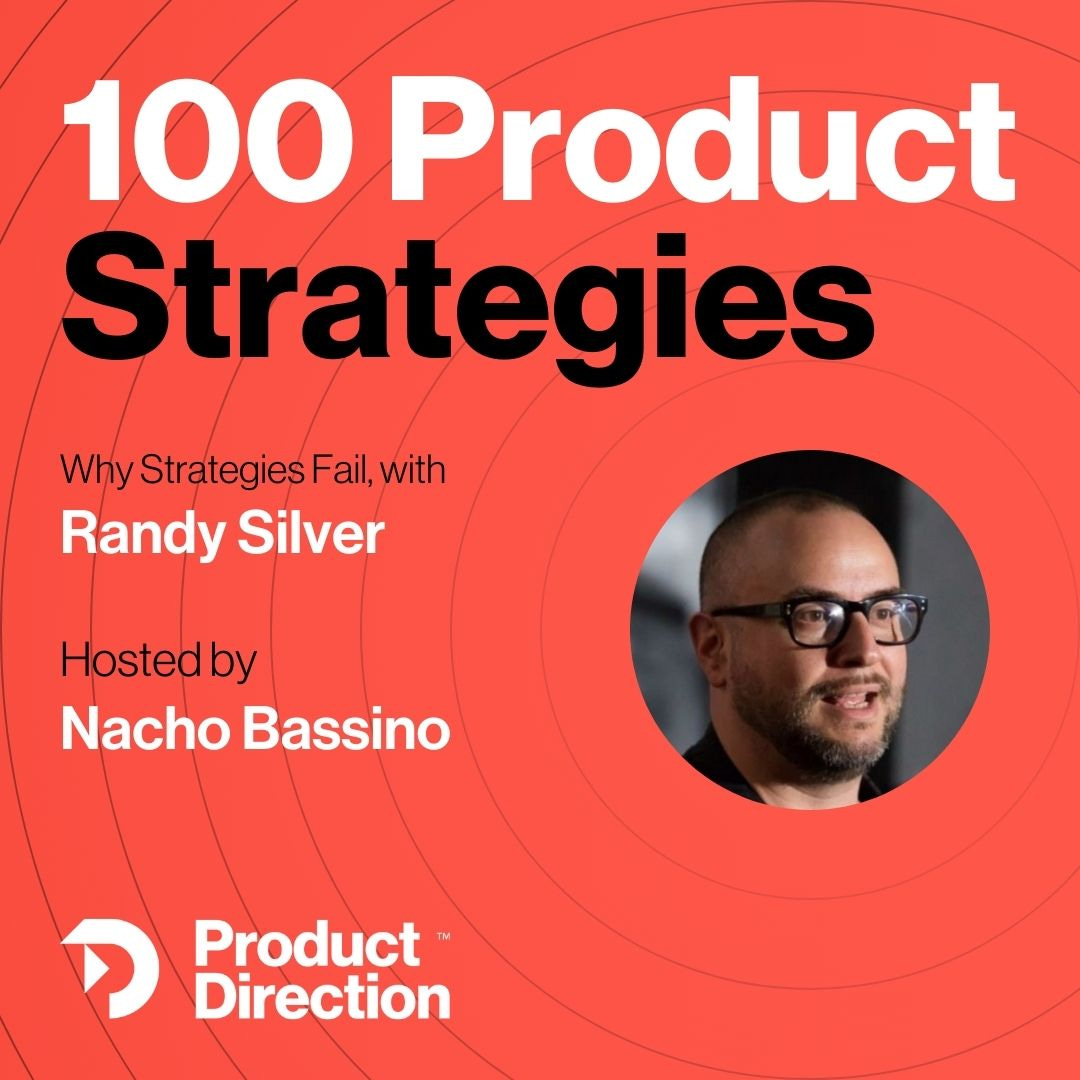Why Good Strategies -even with Good Execution- Can Still Fail
Randy Silver shares stories where different complications sunk what were originally solid strategies
👋 Hi! Nacho here. Welcome to Product Direction’s newsletter. Last week I shared that I was creating a maturity model guide. It’s a mini-course with short videos explaining different stages and actionable recommendations to accelerate your growth. It’s now available!
If you create a great strategy and communicate it properly, and have good people to execute it, what can possibly go wrong?
Well, as you can imagine, multiple layers of complexities can get in the way.
In this episode, Randy shared two stories where different company intricacies made good strategies fail. The learning will help you view your strategy process from a wider perspective and help you avoid these pitfalls.
Randy is the author of What Do We Do Now?, host of The Product Experience podcast by Mind the Product, and Coach and Consultant at outofowls.com.
Listen now on Apple, Spotify, Google, and YouTube, and read on for my takeaways and highlights of the episode.
My takeaways from this episode
Strategies need to be funded. Randy had a great strategy, with an 8MM investment and over 20MM returns, but the executive who had to support the cost would not perceive it and was not aligned with the benefits that would be seen in other areas of the organization. This is an extreme case of stakeholder constraint that can make even the best strategy fail.
Between the lines of the first story, Randy shared an interesting truth: sometimes, you need to work more on fixing customer perception than the product itself. It reminded me of some MS Word stories in which customers will yell for not having a feature that, in fact, was already in the product.
As leaders in large organizations, we also need to be conscious of the bigger picture. Even if we have a strategy that delivers positive ROI, our bosses need to select what horse to bet on, and there may be bigger opportunities for them in other areas of the organization. My takeaways are: 1. Don’t get frustrated; complaining at this point would just be a sign of you not seeing the bigger picture. 2. Ask for the bigger picture! If you have clarity around higher-level goals, you can devise a strategy that supports the company-wide strategic bets.
For the build or buy decision, Randy went through a thorough analysis of current use cases and current capabilities. They compare the options: “Do nothing,” “Invest in the current system,” “Retire,” and “Vendor alternatives.”
In the second example, Randy shared a story of a potentially good strategy misaligned with investors and group synergies. In essence, the company wanted to niche down to bring rapid and valuable solutions to one market, but the parent company wanted to tackle their existing customers, which were larger enterprises that required other types of solutions. The crux of the issue was that they never settled down: the team kept executing, and they kept finding resistance, but they never made the hard choice. This is a classical problem of not really facing and deciding the necessary trade-offs and ending up with a half-baked strategy.
In the end, another force was at play: trust. Essentially the parent company did not trust the assessment that their request was not reasonable until someone whom the CEO trusted came and basically said the same.
How to go through building trust? Exposing confidence levels with Itamar Gilad’s confidence meter or Liz Keogh complexity estimation.
As a final learning, Randy shared how many misalignments are, in reality, a problem of perspective. Facts don’t always defeat emotions, so aligning perspectives requires constructively collaborating.
Don’t miss our next episode! Join our substack and be notified when the next episode is published.



